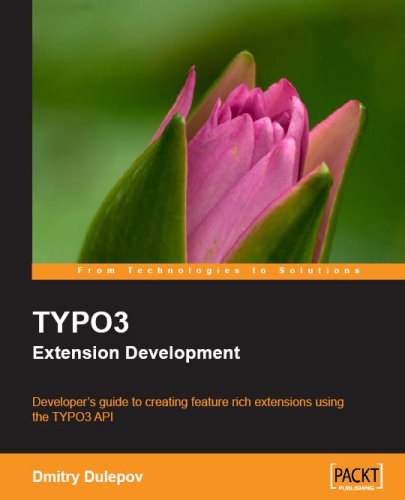

Most ebook files are in PDF format, so you can easily read them using various software such as Foxit Reader or directly on the Google Chrome browser.
Some ebook files are released by publishers in other formats such as .awz, .mobi, .epub, .fb2, etc. You may need to install specific software to read these formats on mobile/PC, such as Calibre.
Please read the tutorial at this link: https://ebookbell.com/faq
We offer FREE conversion to the popular formats you request; however, this may take some time. Therefore, right after payment, please email us, and we will try to provide the service as quickly as possible.
For some exceptional file formats or broken links (if any), please refrain from opening any disputes. Instead, email us first, and we will try to assist within a maximum of 6 hours.
EbookBell Team

0.0
0 reviewsTYPO3 is the enterprise-level content management system for the Web. It is large, feature-rich and very flexible--a lot of this flexibility comes through extensions written by the community. Extensions make it possible to use TYPO3 to drive any type of website, including e-commerce, blogs, social networks, catalogs, and many more. TYPO3 can be completely customized using extensions; however creating an extension can be a challenging task.
This book describes TYPO3 extension creation as it should be done. It starts from an overview of the TYPO3 API and provides recommendations on when and how to use this extensive API. Next it describes the TYPO3 extension generation process. It covers all generation options and emphasizes important decisions that extension developers should be aware of.
Since front-end plugins are the most popular TYPO3 extension type, the book has a chapter dedicated to the process of programming front-end plugins. We then move on to back-end plugin programming. All chapters stress best practices and come with unique tips from the author, who wants his experience to be shared with the TYPO3 community. The book finishes with a chapter about improving code and writing documentation.
What you will learn from this book?
Approach
The book is structured so that following the chapters in order builds a TYPO3 extension from the ground up. Experienced developers can use individual chapters independently to get only the information that they need.
Each chapter is divided so that the first part contains a description and discussion of the topic covered followed by a coding example with explanation of how principles and techniques from the first part are followed in the code.
The reader is encouraged not only to read the book but also to look into the discussed classes and actually code the extension while reading the book.
Who this book is written for?
This book is for PHP developers who want to develop a TYPO3 extension. It assumes the reader has experience with PHP, XML, and HTML. No prior knowledge about TYPO3 extension programming or the TYPO3 API is presumed.